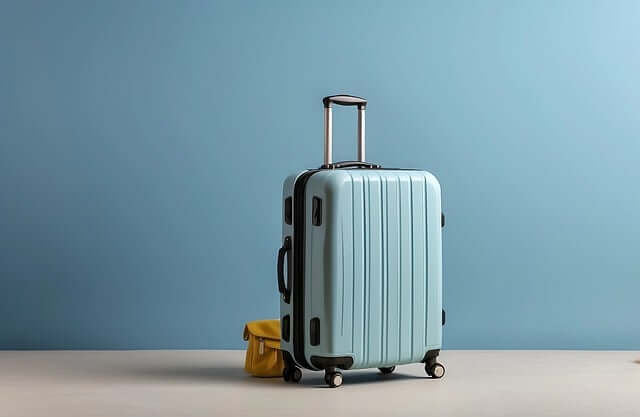Finding your way around immigration rules can be complex, especially for international students planning to study in the United States.
Student and Exchange Visitor Information System (SEVIS) and I-20 Form
Before applying for a visa, students must first gain admission to a U.S. institution. The institution must be certified by the Student and Exchange Visitor Program (SEVP). Upon acceptance, the institution will provide you with a Form I-20. This form is crucial. It will be required to register with the SEVP’s Student and Exchange Visitor Information System (SEVIS).
You will also need it to apply for your student visa. To enter the United States, and even apply for a driver’s license or a social security number, you will need the form 1-20. It is a form that shows or proves that your admission to study in the U.S. in an accredited institution is legal.
Here are the top 10 immigration rules international students coming to the USA should always remember.
1. Visa Validity and Entry
You need a valid visa to enter the United States, but not necessarily to remain in the country. For instance, if a student’s visa expires while they are in the U.S., they can stay as long as their I-20 and passport are valid and they are enrolled in school. However, they must obtain a new visa if they leave the U.S. and wish to return.
Each international student’s situation can vary based on their country of origin. The type of visa they hold, and their circumstances can also cause this variation. It is best to consult an immigration attorney, or a university’s office for international students for tailored advice.
You may be wondering the type of visa you need as an international student in the US, and what a form 1-20 is. Here’s a breakdown of what you should know.
Also Read: 10 Most Popular U.S. Visa Interview Questions and Answers
Types of Student Visa
The first step for international students is to obtain the appropriate student visa. According to your level of education, here are the most common and primary types of student visas in the USA:
- F-1 Visa: This is for students attending an academic or English Language Program at an accredited U.S. college or university. F-1 students must maintain full-time student status and can work up to 20 hours a week on campus. If you are studying a postgraduate course in the U.S., what you need is an F-1 student visa. It is granted only to students doing a full-time program.
- J-1 Visa: this is for students participating in exchange programs. It includes high schools and universities. J-1 visa holders have similar work rights to F-1 students. However, they must meet the exchange visitor program requirements.
- M-1 Visa: It is for those attending vocational schools or other nonacademic institutions. language training programs are not included.
2. Maintain Your Status
There are certain things you need to do to maintain your status as an international student in the US. They include:
- Full-Time Enrollment: International students must maintain full-time status at their educational institutions. This means enrolling in at least 12 credit hours per semester for undergraduate students and 9 credit hours for graduate students, though this can vary by institution.
- Address reporting: you have to report to your school whenever you change your address. This information will be updated in SEVIS.
- Respect work limits: if you must work off campus, then apply for an off-campus work permit.
3. Valid Immigration Status
Students need to ensure that their immigration documents such as their visa, I-20 form, and passport, are valid at all times. The I-20 form must be updated and reissued if there are major changes to a student’s degree program or funding.
4. Work Restrictions
International students in the U.S. are limited to working on campus for up to 20 hours per week during the school term. They can work full-time, up to 40 hours weekly during holidays and vacation periods. Off-campus employment is restricted and usually requires authorization. working more than the hours allowed can lead to you losing the right to work in the United States.
NOTE: International students who are employed in the U.S. need a social security number. Students not employed are not eligible to apply for an SSN.
5. Annual Vacation
International students in the United States are eligible for an annual vacation after completing a full academic year. This is provided they intend to register for the next academic term.
6. Update Personal Information
students must report any changes in their address, legal name, or major, to their school’s international office within 10 days of the change. Failure to do so could result to complications with immigration authorities.
Also Read: How to Choose the Best Country to Do Your Masters’ Degree Abroad as a Nigerian
7. Grace Periods
Following completion of their study program, students with an f-1 visa have a 60-day grace period to leave the U.S.
They can apply for a program extension, or change their visa status within this period. J-1 and M-1 students have a 30-day grace period. This period is crucial for ensuring they remain in legal status and avoid accrual of unlawful presence, I.e. staying in the U.S. after the end of their authorized stay.
8. Program Extension
If a student cannot complete their academic program by the end of the date on the I-20 form, they must apply for a program extension before the date it expires. Transfer Regulations changing program
Students who wish to transfer to another institution must notify their current school and work well with both institutions to ensure a smooth transition and compliance with immigration rules. They should also ensure that their SEVIS record is transferred to the institution they are transferring to.
9. Health insurance
Health insurance is not really an immigration rule. However, due to the cost of healthcare in the U.S., many universities require international students to have health insurance coverage through out their stay in the U.S.
10. Visa expiration
As an international student, you should be aware of the expiration date on your visa. Failure to maintain a valid visa by taking the necessary steps to extend or renew it can affect your legal status and jeopardize your chances of re-entry into the U.S.
Also Read: Which Schengen Countries Are the Easiest to Get a Student Visa?
Conclusion
International students in the United States are advised to follow these immigration rules to enjoy a stress-free academic experience.
Remember to always consult your international student advisor. Always check for the latest updates from the U.S. Citizenship and Immigration Services (USCIS) website.
As mentioned before, you can also consult an immigration attorney to get personalized advice as these rules may vary based on your country of origin.

























